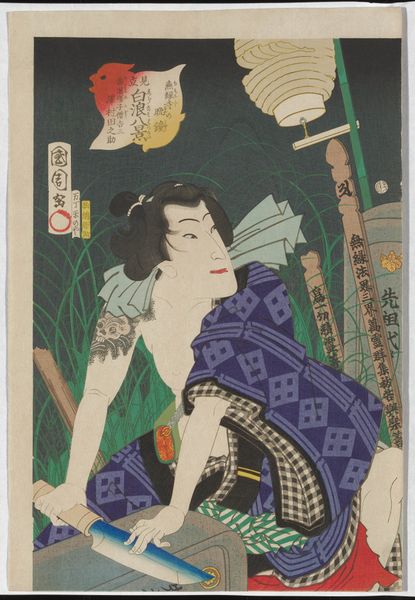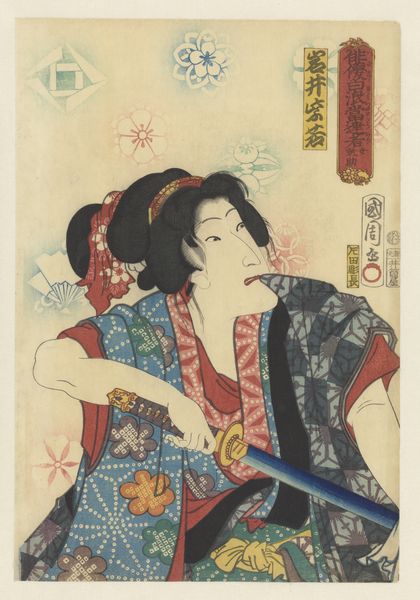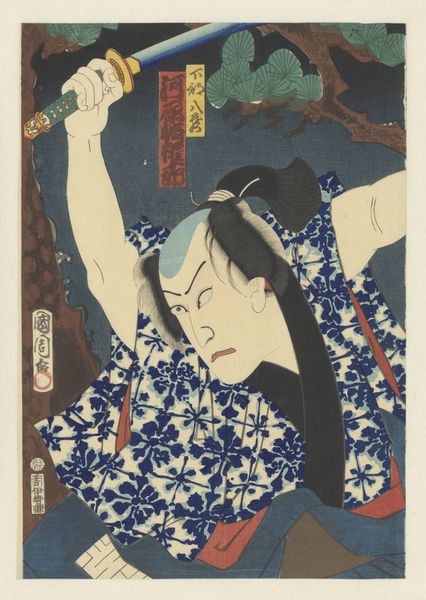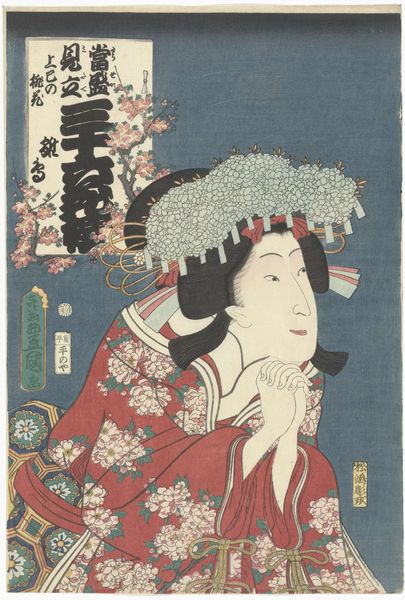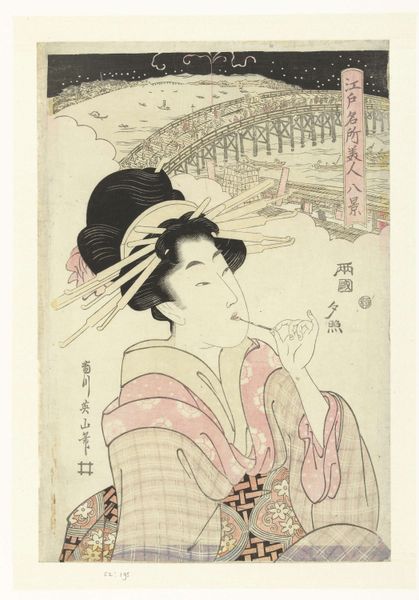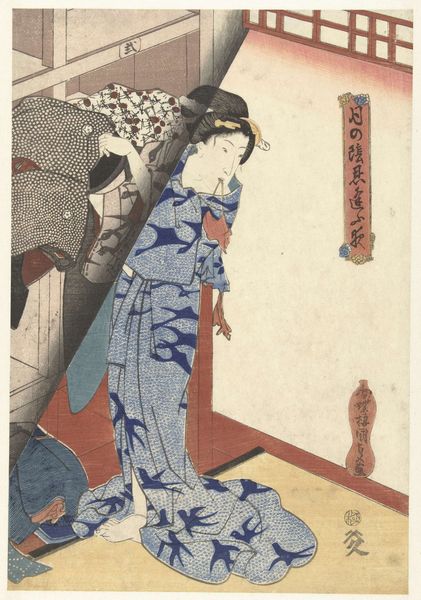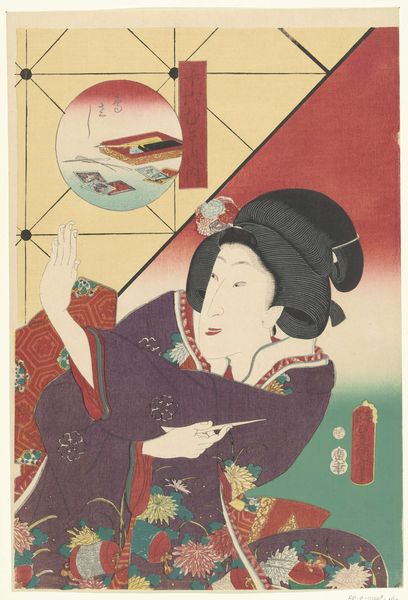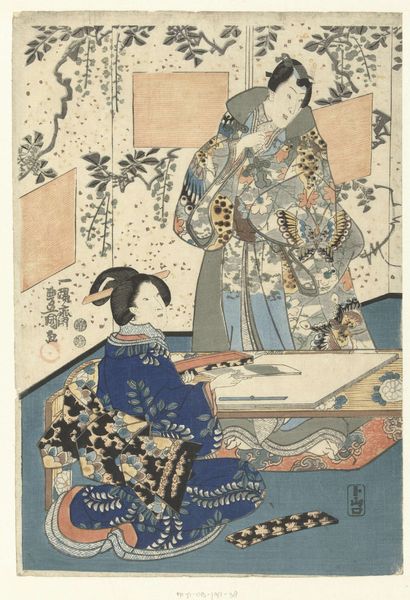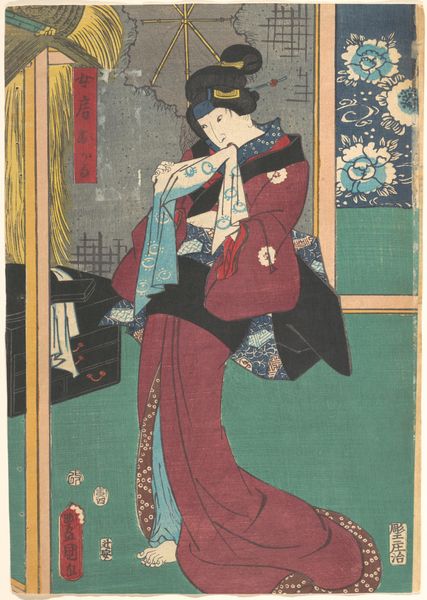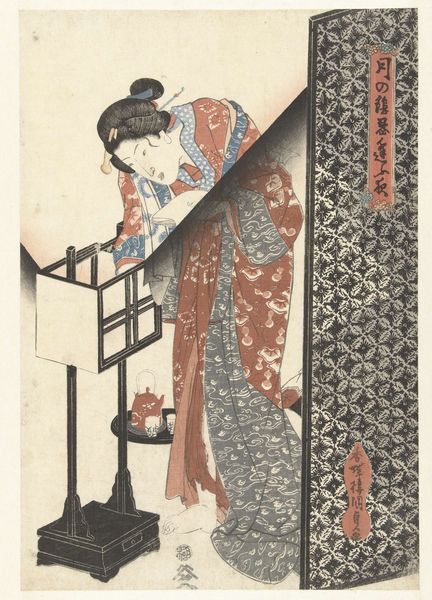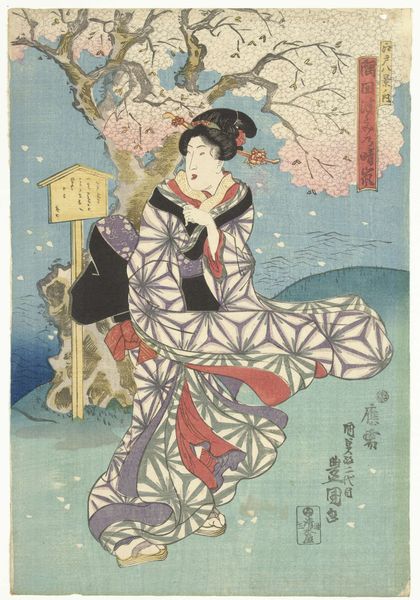
Dimensions: height 369 mm, width 247 mm
Copyright: Rijks Museum: Open Domain
Curator: Oh, I find this woodblock print just fascinating. It's called "Na het bad," or "After the Bath," by Toyohara Kunichika, created in 1883. It is now part of the collection here at the Rijksmuseum. Editor: Immediately I am struck by the stillness of it all, and a feeling of serenity, or perhaps introspection, coming from her expression. I think the almost abstracted geometric lines surrounding her, of architectural fragments of this indeterminate interior-exterior place contribute to a very serene but also off-kilter effect. Curator: Absolutely, Kunichika plays with these interior and exterior spaces to highlight social context; ukiyo-e prints like this one weren't just art objects, they also offer glimpses into the lives of women and the bathhouses, and hint at other stories from the floating world. How women and pleasure were viewed during the Meiji era, which might seem contradictory when viewed through modern morality, when we consider how art and commerciality become intertwined in the production of the woodblock print. Editor: Intertwined indeed, what also intrigues me is her gaze averted upwards and to her left—like a painter looking up at her model for a quick second before setting about to her business once again. As well as what is unseen happening just off to our right and outside the frame, suggested only by a second hand approaching, offering a small compact. She seems as if lost in her own reverie. Curator: These types of prints functioned much like popular magazines do for us today. It's almost like getting to peek at a celebrity without their permission! While ostensibly about private life, their popularity ensured they became very public images, reshaping perceptions, even informing social behaviors. You know, ukiyo-e also greatly impacted the evolution of international arts. Editor: And a global view. Well I will say, if those fleeting moments have any meaning as they trickle and then surge, then Kunichika did a grand service when, like an inadvertent stage director, he arranged and captured this specific after-the-bath mise-en-scène, and let us see through this keyhole. Curator: Yes. Kunichika invites us to reflect on the tension between privacy and performance, art and commodification in Japanese modern society. It makes one wonder what that second hand is reaching for...
Comments
No comments
Be the first to comment and join the conversation on the ultimate creative platform.
